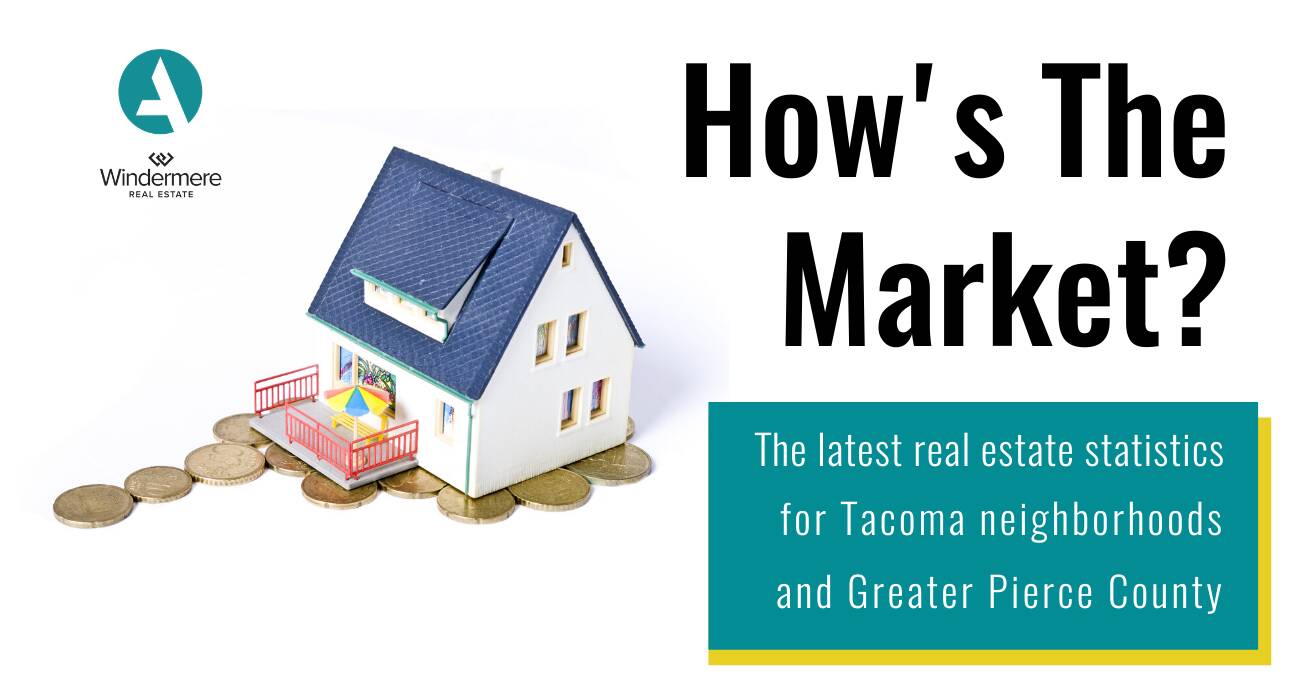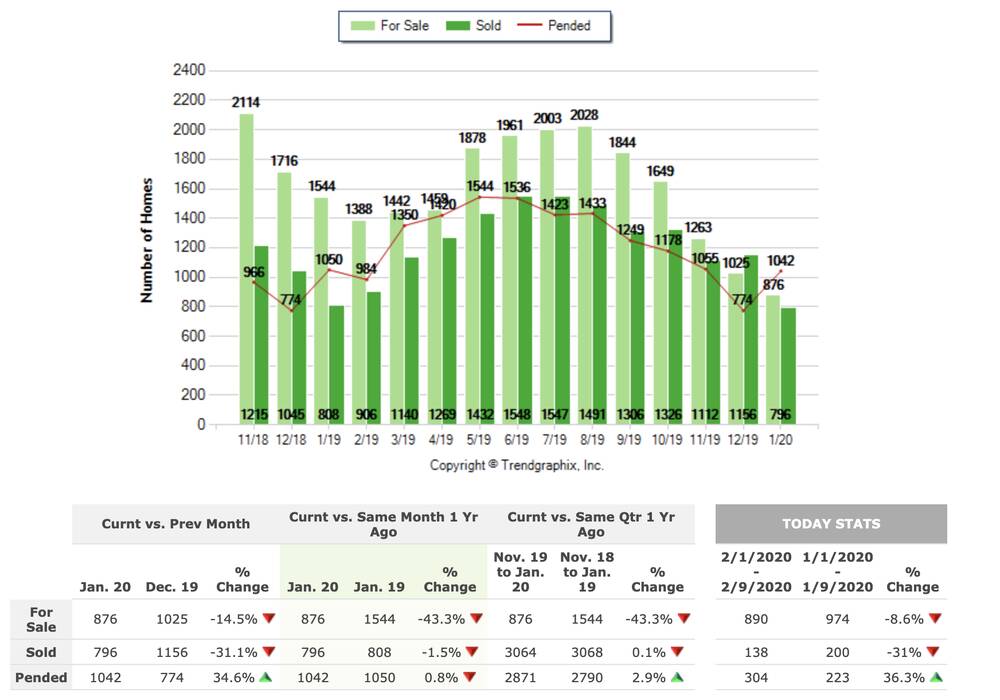Housing inventory is at a 15-year low in Pierce County. While the activity has picked up from the month of December to January, there have been other factors that one would think would impact the market (the looming Coronavirus, impending election outcomes, etc). We also have low interest rates holding steady, so people are still out in the market searching for homes. The good part? Homes on the market that have been prepped well by the sellers (with the help of their Realtor) have been receiving multiple offers and getting scooped up by qualifyed buyers. Is this our new normal in Pierce County? Let’s dive into the numbers to take at what took place in January of 2020:

PIERCE COUNTY
The median price for a single family home in Pierce County increased $7,400 in January at $382,400. That is up $48,175 from a year ago, $334,225 in January of 2019. Ladies and gentlemen, that is approximately a 14% jump in one year. The issue this year once again is lack of inventory. Take a look at the graph below:
Looking at the graph, you can see both ‘for sale’ and ‘sold’ properties both went down, while pending sales went up. That is on trend with 2019, however inventory is down 43.3% from January 2019 to January 2020. There are 668 less properties this year than last year at the same time.
That tells one story, but let’s break that down further and look at the market in Pierce County UNDER $500,000:
Wow! Not only have the available properties for sale gone down 17.4% from December ‘19 to January ‘20, but the gap of properties available on the market is sizable; it’s down 57.3%. In January of 2020, in the sub-$500,000 price point, there were 521 LESS properties available compared to last year at the same time. Will this trend keep up moving into February? For our buyers out there, we hope not.
Another statistic we like to look at when gauging the market and whether it’s a buyers or sellers market is the ‘Months of Inventory’ (MOI). In a ‘balanced market,’ the MOI should hover around three to six; meaning if no more houses went on the market, it would take 3-6 months to absorb the inventory. Below three is a sellers market, and above six is a buyers market.
In the graph below, we take a look at the MOI versus the median price. You’ll notice that the lower the MOI, the higher the median price climbs over time.
Continuing with the low inventory theme, in January of 2019 we had 1.9 months of inventory, in January of 2020, we were at 1.1 MOI. We’re down 41.9% in that regard. When looking at the trend of MOI of 2019, the properties for sale went down as we moved into the Spring market. In 2019, 1.1 was the lowest MOI we hit in April, right smack in the middle of the Spring market. While new inventory will hit the market, buyers will need to be prepared to create strong offers that provide some incentive for sellers to accept their offer. The inventory that has been sitting over the winter, could get a second look to potential buyers on the market who have just lost out on a home. Sellers can position themselves nicely, as they know their homes will be looked at with a fine tooth comb. Hitting the market (opposed to off market) is where you will get more eyeballs on the property, with the hope of maximizing marketing and reach, which your agent and brokerage provide.
TACOMA
Tacoma is seeing the same trend as the rest of Pierce County. Let’s take a look at Tacoma:
First, there are far more properties pending sale than on the market for sale. There were 169 more properties on the market in January of 2019 in Tacoma; which is 54.5% more homes than today. One trend you want to pay attention to is how many homes have been put on the market at the same day, last month as this month (Jan ‘20). According to the table below graph, we are down 14.5% as of the 11th day of the month, as we move through the month of February.
Now let’s take a look at the sub-$500k market in Tacoma:
Our source, Trendgraphix, only goes back 15 years, and in those 15 years, January 2020 is the lowest number of properties for sale on record, at 82 for the month of January ’20. In 2019, you can see the properties available decreased from January to February… will we see the same happen this year? Take a look at the right side of the table below the graph, and you will see we are currently down 25% as of the 10th of the month, when compared to January ’20.
SUMMARY
In some respects we have hit unprecedented lows. The sub-$500k market in both Pierce County and Tacoma show the same inventory trends; inventory is slim, and options are limited. As a buyer, you will need to be prepared to do everything you possibly can to be competitive when searching for the right home. Take a look at our podcast page and listen in to hear conversations about buyers in the market, and how to be competitive. Choosing a skilled Realtor who is plugged in to upcoming listings, on and off market, will be crucial in your search. The brokers at Abode are privy to the latest information on the Pierce County markets, and are ready to help you in your journey.
Sellers, you cannot find a better time to sell your home in the Pierce County area. When positioned correctly on the market, you can take advantage of the shortage and provide the market what it needs, while maximizing how much you can make on the sell of your home. The demand for homes in 2020 will continue. Will we be the hottest market in the nation again? We very well could already be there.
TERMINOLOGY KEY
Chances of Selling - Pending properties over active properties. When there are more pending than actives, your chances of selling increase due to less homes on the market. Conversely, if there are more active homes than pending, buyers have more options, thus a ‘buyer’s market.’
Median days on market - ‘Days on Market’ is just that; how many days your home has been on the market.
Median Sales Price - The reasoning to use the median is the same here, with the sales price being self explanatory. The sales price indicates the median price of homes
Why use the median?
We utilize the median so the data can tell a close to real story, and the data isn’t skewed by outliers. For example, if you have 5 homes and one has been on for 125 days, while the four others have been on for 15 days, the outlier of the bunch (property that sat for 125 days on market) doesn’t skew the data set.







